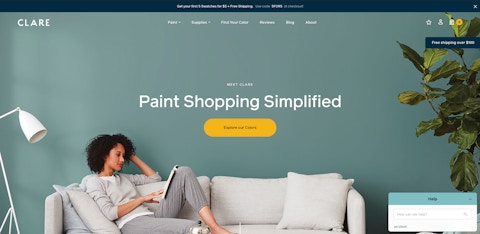Zach and Beth talk about how building materials manufacturers can use conversation marketing to scale relationship building and sales.
More About This Show
The Smarter Building Materials Marketing podcast helps industry professionals find better ways to grow leads, sales and outperform the competition. It’s designed to give insight on how to create a results-driven digital marketing strategy for companies of any size.
In this episode, Zach and Beth discuss why conversation marketing is the next step in digital marketing and tactics to use in your own online strategy.
___________
It’s easy for any building materials manufacturer to focus on raw metrics of digital marketing efforts, like website traffic and the number of leads generated. But more importantly, you need to focus on conversations and the relationships you’re building.
Conversation is the new lead. When we look at digital marketing, we need to swing the pendulum from metrics back to relationships.
Most building materials manufacturers have used in-person conversation marketing as the backbone of their business, but you need to tweak your strategy in order to stay in line with technology so you can grow and outpace your competition.
The trend of conversation marketing is merging technology and relationships in an effective way. Building relationships has always been an important component for the industry, and conversation marketing allows you to scale it beyond what’s capable with man-hours alone.
What Is Conversation Marketing?
Conversation marketing is when you position your marketing as a dialogue. Instead of treating marketing as repeatedly talking about your products and their value propositions, you take into consideration your potential customer and what information is important to them. By treating your marketing as a conversation, you give yourself the opportunity to pivot your messaging based on the feedback you receive.
You can apply this perspective to marketing across the board, including your website, email campaigns and social media. All of your marketing should be looking for that feedback loop to see what’s working and what’s not and adjusting your strategy accordingly.
Conversational Shift to Convenience
Most manufacturers have a multi-step process to get information to leads, from filling out a form to placing the lead into an automation sequence.
Get rid of that complicated process and create avenues to efficiently get your audience the information they’re looking for. Chatbots make this extremely easy to do on your website.
You need to cut out the back and forth and get straight to the source of the problem.
Clare Paint is an excellent example of how to do this. There’s no form with a quote; instead, there’s a chatbot offering dialogue to get you the right paint instantaneously.

You can use technology to get what people what they need more easily and more quickly. You’re essentially supplying the same level of service but using technology to amplify it, whether that’s through chat or email.
Rather than thinking of this kind of tool as a bot, take a step back and look at it as a conversation tool. People are using messaging tools more than ever.
90% of people prefer to use a messaging tool, such as text or FB messenger, than any other type of communication.
Include these tools in your marketing and treat it like a sales conversation. It’s just like your salespeople shifting a pitch based on whether they’re talking to an architect, contractor or builder.
The majority of building product audiences view the manufacturer as an industry expert. Instead of continually pushing your product, engage with leads, then make a recommendation on what solution will solve their problem.
In a recent podcast with Phil Sardigno, we found out how he builds a huge audience just by providing helpful content in a conversational way and by making recommendations, even if the product he recommends isn’t his own.
You could even call this process relationship marketing because you’re trying to build value and help people with their problems. Make convenience the cornerstone of your efforts.
Conversation marketing provides the outcome you want. As you build your efforts through chatbots, marketing automation and emails, you’ll build a better relationship with your leads, making them more comfortable with your brand and more likely to buy.
Getting Started and Scaling Growth With Conversation Marketing
First, realize that you’re probably closer to successful conversation marketing than you think. This isn’t a crazy new idea for most manufacturers, and with a few shifts, you can be really effective.
There are three components of a solid conversation marketing strategy: engage, understand and recommend.
When you engage, you find ways to get in front of your audience through chatbot, form or email to start bringing down the lead’s walls.
To understand, think about who you’re talking to, such as whether it’s an architect, builder or homeowner, for example. Then find out their problems by listening to them. You need to make them feel heard to create a relationship.
The final step is to recommend a solution to their problem. A bot or individual interacting through the website can answer a lead’s question and send them to the right place online by recommending a solution. This isn’t necessarily selling, which is a critical distinction because they’ll begin to trust you.
In order for you to win, you’ve got to build trust and make sure your audience feels heard, give them value and offer a recommendation in the process.

There needs to be a mentality shift in the way building materials manufacturers market. The old way of marketing created a generic experience, making it difficult for individuals to find what they were looking for.
Today, the customer is at the center and it’s your job to remove as much friction as possible.
Whoever gets closest to the customer wins, making it vital that you engage with them on their own terms.
People expect a personalized experience and want to find what they need right now. If they’re looking for something on your website, it’s in response to an immediate need.
That’s why conversation marketing is so important: It puts the customer in the driver seat and gives you both a level playing ground because you can supply the customer with a solution.
In in-person sales, you’re very accommodating, and your digital marketing efforts should be no different. Make your marketing about solving problems in a way that is incredibly easy. It creates an intrinsic feeling that you understand your customer and want to help.
At the end of the day, it’s about positioning your brand to be focused on the customer and their problems and less on selling. By giving people what they want more quickly, it’s easier for them to work with you. Conversation marketing helps with your sales cycle, creates a rapport with customers, and ultimately, makes the buying process easy.
Think about how your building materials company can shift to create more conversations and be helpful to customers at each step in the conversion process.
When thinking about next steps, look at your online presence and ask yourself, “Is this focused on building relationships and starting conversations?” If not, look at places that need those elements, especially where analytics tell you people aren’t finding what they're looking for. It’s all about the speed of delivery.
If you have a question about what conversation tools are right for your company, please reach out to us at [email protected]. We’d love to help.
If you want more great content about digital marketing for building materials manufacturers, check out the rest of our podcasts.








